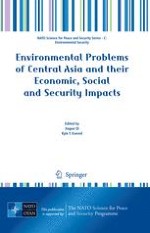Over the last 60 years, we have recognized increasingly that our world is connected, and the impacts of environmental catastrophes and economic crises in one region of our world have far-reaching and long-lasting consequences globally. Central Asia is a developing region with great potential, but there are valid concerns that current resource management practices are not sustainable, particularly with regard to the management of water resources. Recent changes in social structures, accompanied by regional climate change, have caused substantial environmental changes leading to security concerns in the region. As a result, the local economy has been significantly impacted to the extent that the potential for social unrest is of great concern.
This book explores new technologies and adaptation strategies to mitigate these environmental problems and cope with continued environmental change with the ultimate goal of promoting sustainable growth and improved quality of life in the region.
